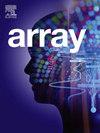A comparative study of machine learning and deep learning models in binary and multiclass classification for intrusion detection systems
IF 2.3
Q2 COMPUTER SCIENCE, THEORY & METHODS
引用次数: 0
Abstract
Network infrastructure evolution has significantly expanded the attack surface, leading to increasingly complex and sophisticated cybersecurity threats. Traditional rule-based intrusion detection systems (IDS) often fail to detect emerging attack vectors, prompting the need for intelligent, data-driven approaches. This study evaluates and compares the performance of machine learning (ML) and deep learning (DL) models for network intrusion detection. Two publicly available datasets were utilized: a binary-labeled software-defined networking (SDN) dataset and a multiclass industrial control system dataset based on the IEC 60870-5-104 protocol. Preprocessing steps included normalization, label encoding, and a 70:10:20 train-validation-test split. Seven models, Random Forest, Decision Tree, K-Nearest Neighbors, XGBoost, Convolutional Neural Network, Gated Recurrent Unit, and Long Short-Term Memory, were trained and evaluated using precision, recall, and F1-score. The Random Forest model achieved the highest F1-score of 93.57 % on the IEC 60870-5-104 dataset, while XGBoost attained a near-perfect F1-score of 99.97 % on the SDN dataset. These results outperform comparable models in the literature and offer practical insights for selecting effective IDS solutions based on classification type and dataset structure.
机器学习与深度学习模型在入侵检测系统二分类与多分类中的比较研究
网络基础设施的发展大大扩展了攻击面,导致网络安全威胁日益复杂和复杂。传统的基于规则的入侵检测系统(IDS)往往无法检测到新出现的攻击向量,这促使人们需要智能的、数据驱动的方法。本研究评估并比较了用于网络入侵检测的机器学习(ML)和深度学习(DL)模型的性能。使用了两个公开可用的数据集:一个二进制标记的软件定义网络(SDN)数据集和一个基于IEC 60870-5-104协议的多类工业控制系统数据集。预处理步骤包括规范化、标签编码和70:10:20训练-验证-测试分割。随机森林、决策树、k近邻、XGBoost、卷积神经网络、门控循环单元和长短期记忆等7个模型进行了训练,并使用精度、召回率和f1评分进行了评估。随机森林模型在IEC 60870-5-104数据集上获得了最高的f1分数93.57%,而XGBoost在SDN数据集上获得了近乎完美的f1分数99.97%。这些结果优于文献中的可比模型,并为基于分类类型和数据集结构选择有效的IDS解决方案提供了实用的见解。
本文章由计算机程序翻译,如有差异,请以英文原文为准。
求助全文
约1分钟内获得全文
求助全文

 求助内容:
求助内容: 应助结果提醒方式:
应助结果提醒方式:


